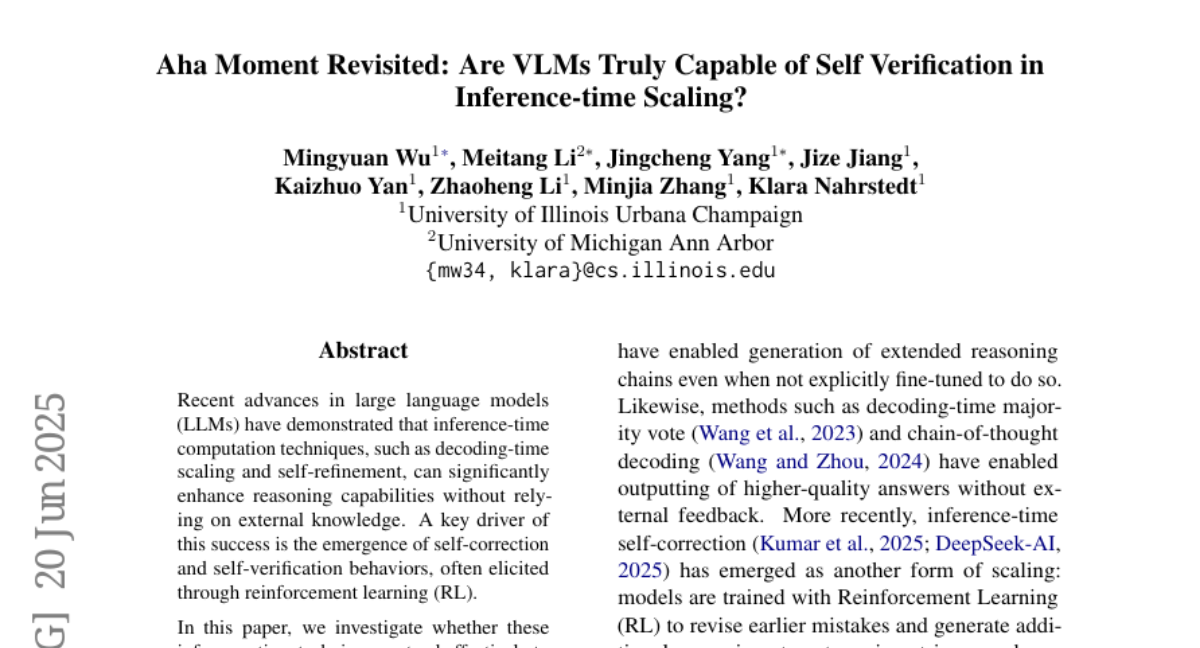Aha Moment Revisited: Are VLMs Truly Capable of Self Verification in Inference-time Scaling?
Mingyuan Wu, Meitang Li, Jingcheng Yang, Jize Jiang, Kaizhuo Yan, Zhaoheng Li, Minjia Zhang, Klara Nahrstedt
2025-07-01

Summary
This paper discusses how recent techniques used to improve reasoning in large language models might work for vision-language models. These techniques include methods that help the model correct and verify its own reasoning while it is making predictions. The study explores if vision-language models can truly verify themselves during inference, especially those trained with reinforcement learning.
What's the problem?
The main problem is that vision-language models, even those trained with advanced methods like reinforcement learning, do not seem to have strong abilities to verify their own answers during inference time. This lack of self-verification means the models can't effectively correct mistakes or confirm the accuracy of their responses when faced with visual and language inputs.
What's the solution?
The researchers tested different inference-time approaches that are designed to enhance reasoning, such as majority voting and best-of-N selection combined with self-verification methods. They found that methods relying on generating multiple guesses and selecting the best one worked better than methods relying heavily on self-verification. Interestingly, the study showed that models often did not use visual information effectively when trying to verify their answers, indicating weak self-verification capabilities.
Why it matters?
This study matters because it highlights a key limitation in current vision-language models, showing that they lack strong self-correction abilities which are essential for robust understanding and reasoning. Understanding this limitation helps researchers focus on improving these models for better performance, especially in tasks that require combining vision and language information accurately.
Abstract
Inference-time techniques like decoding-time scaling and self-refinement enhance reasoning in vision-language models, with generation-based methods providing greater improvement than verification-based methods, despite RL-trained models not showing self-correction benefits.